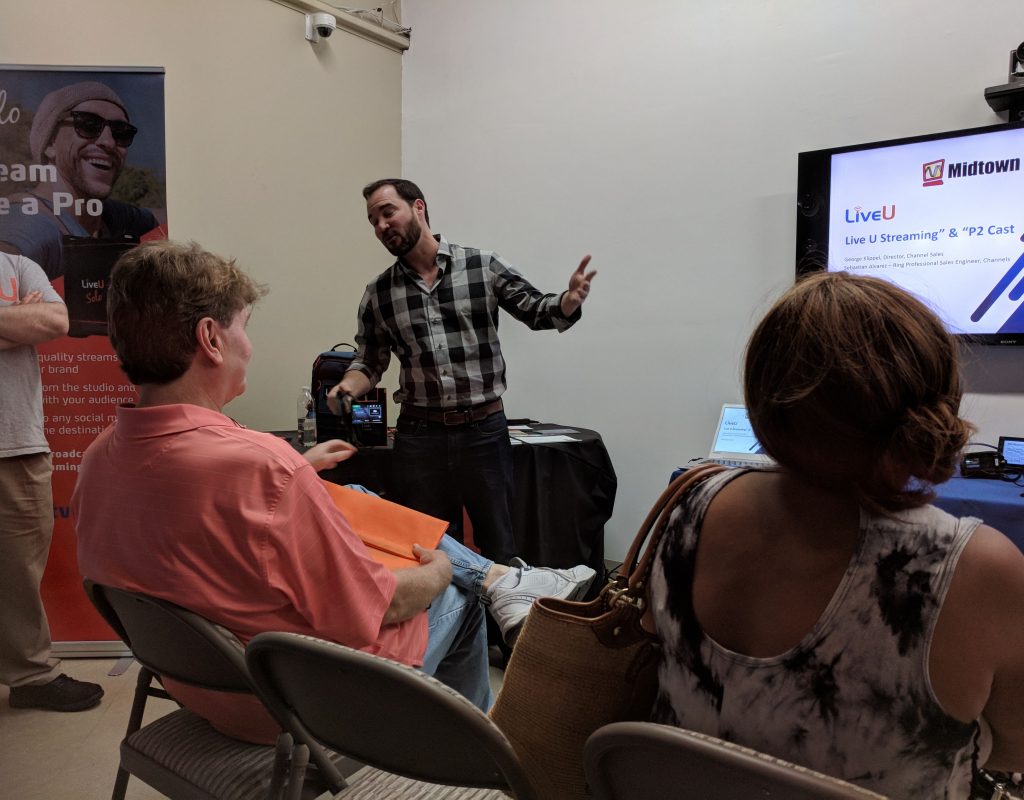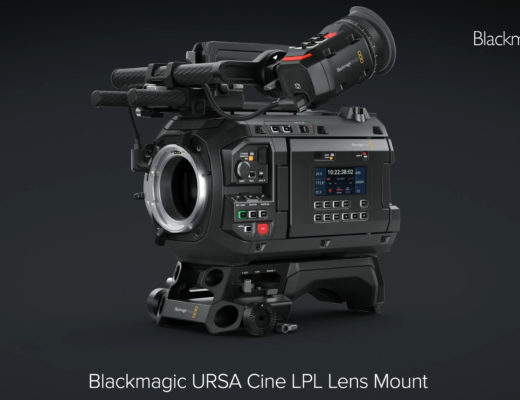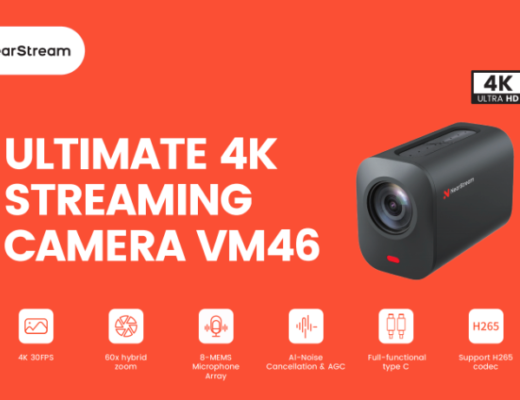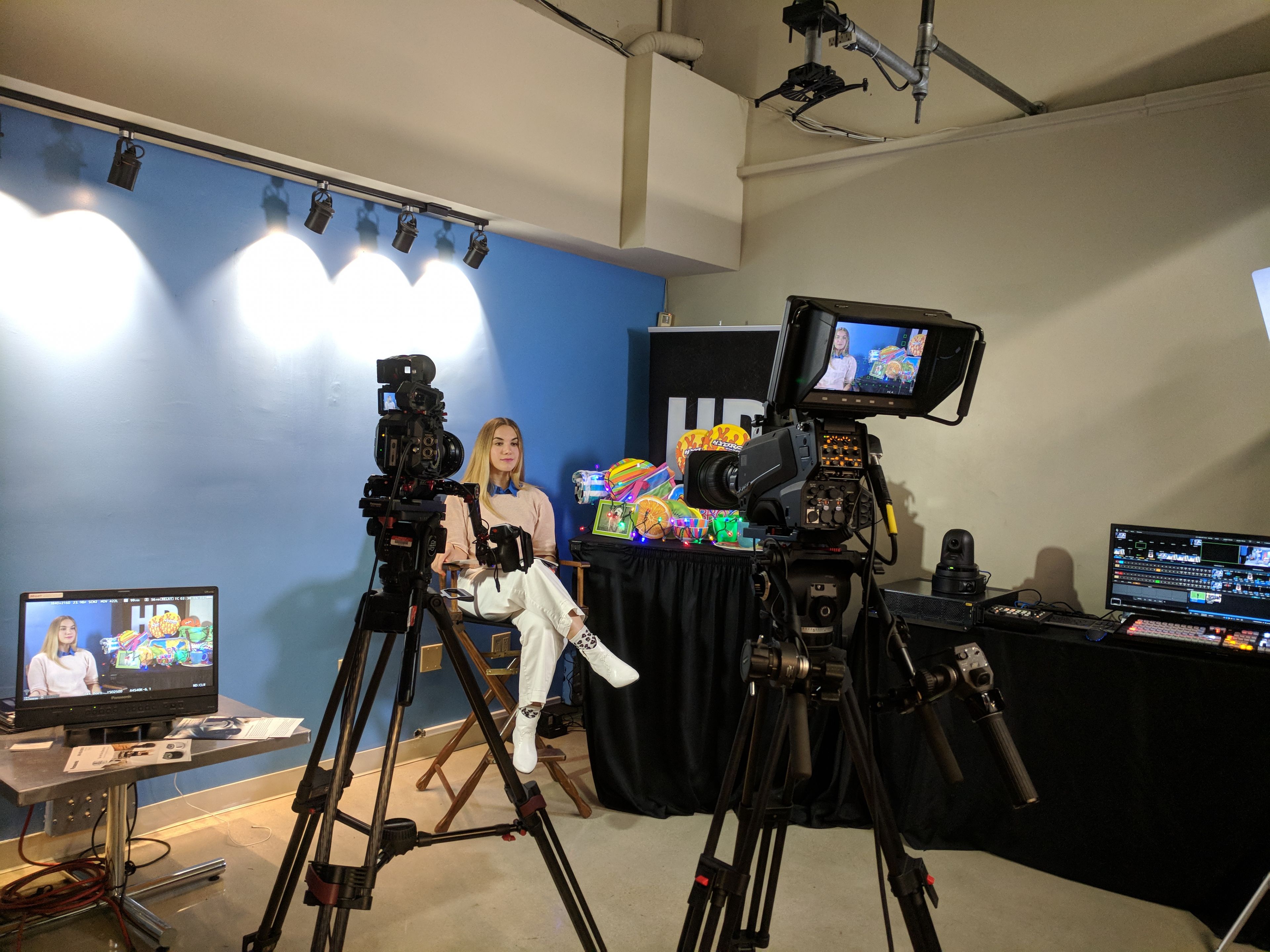
Last week in Miami at Midtown Video’s expo, I got to see full presentations on three Panasonic cameras and two LiveU products for live streaming, given by product managers and sales engineers. The Panasonic cameras included the AJ-PX270 EFP/ENG streamcorder camcorder, the the AU-EVA1 compact cine camera (recently reviewed by Adam Wilt, with links ahead) and the AK-UC3000 4K HDR studio camera. The LiveU products included the LU600 HEVC and Solo HDMI. There were curious attendees present from throughout South Florida and the Caribbean. Here are my brief comments about each product, the answers to my questions and a video.
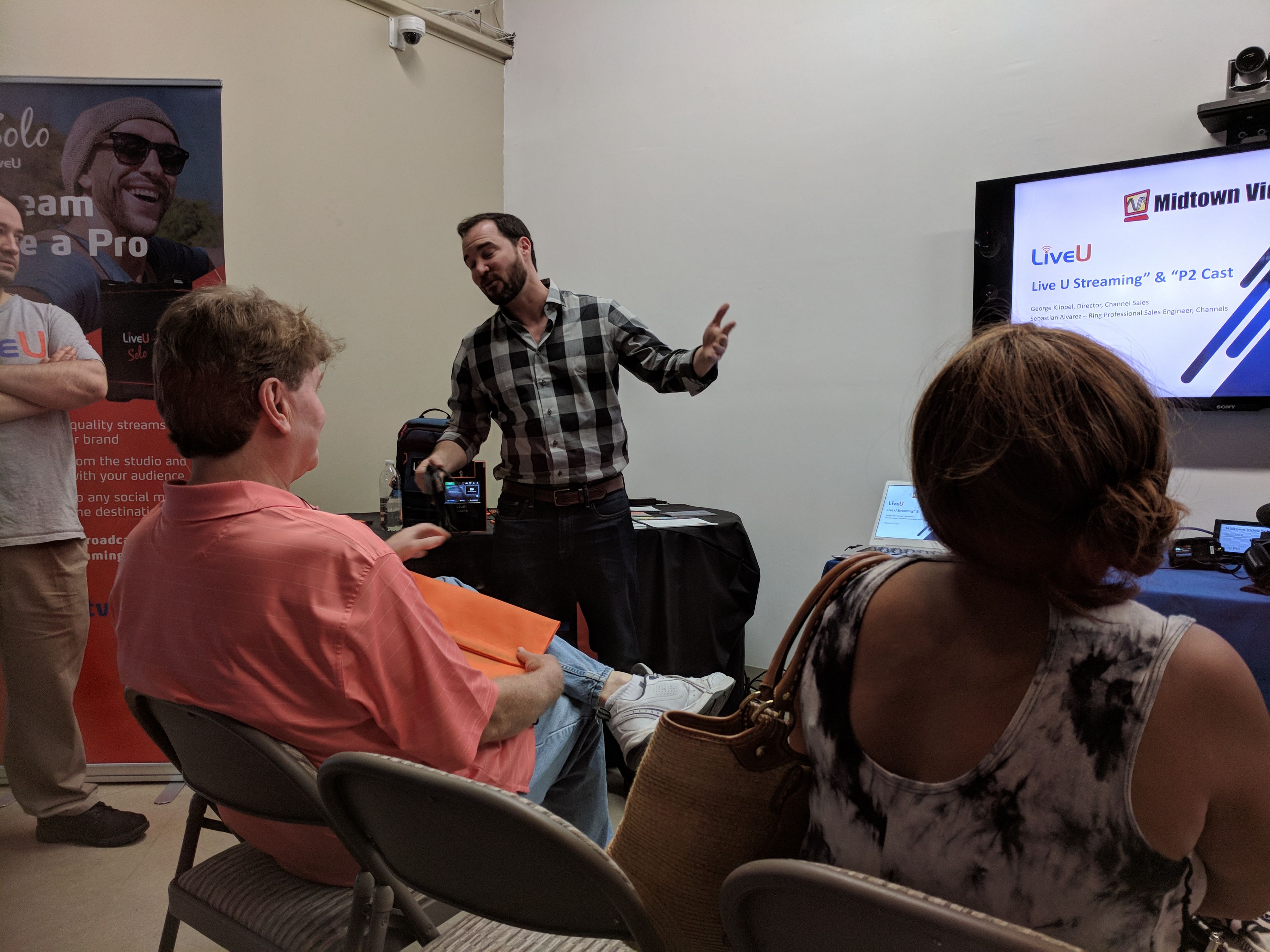
Jesse Miller of Midtown Video acts as Master of Ceremonies of the expo
Panasonic AJ-PX270 EFP/ENG streamcorder camcorder
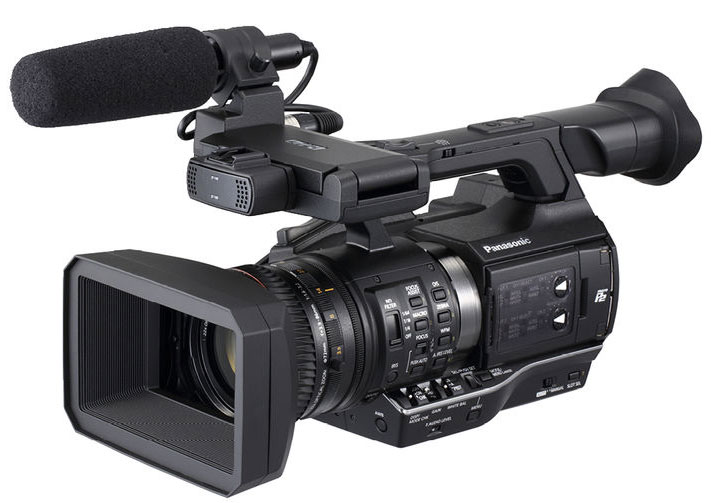
What I found interesting about this camera is that it can upload its proxy files to either Avid or Premiere Pro CC, and then the editor (via a Panasonic plugin) can request uploading the high-quality versions of only the exact frames used.
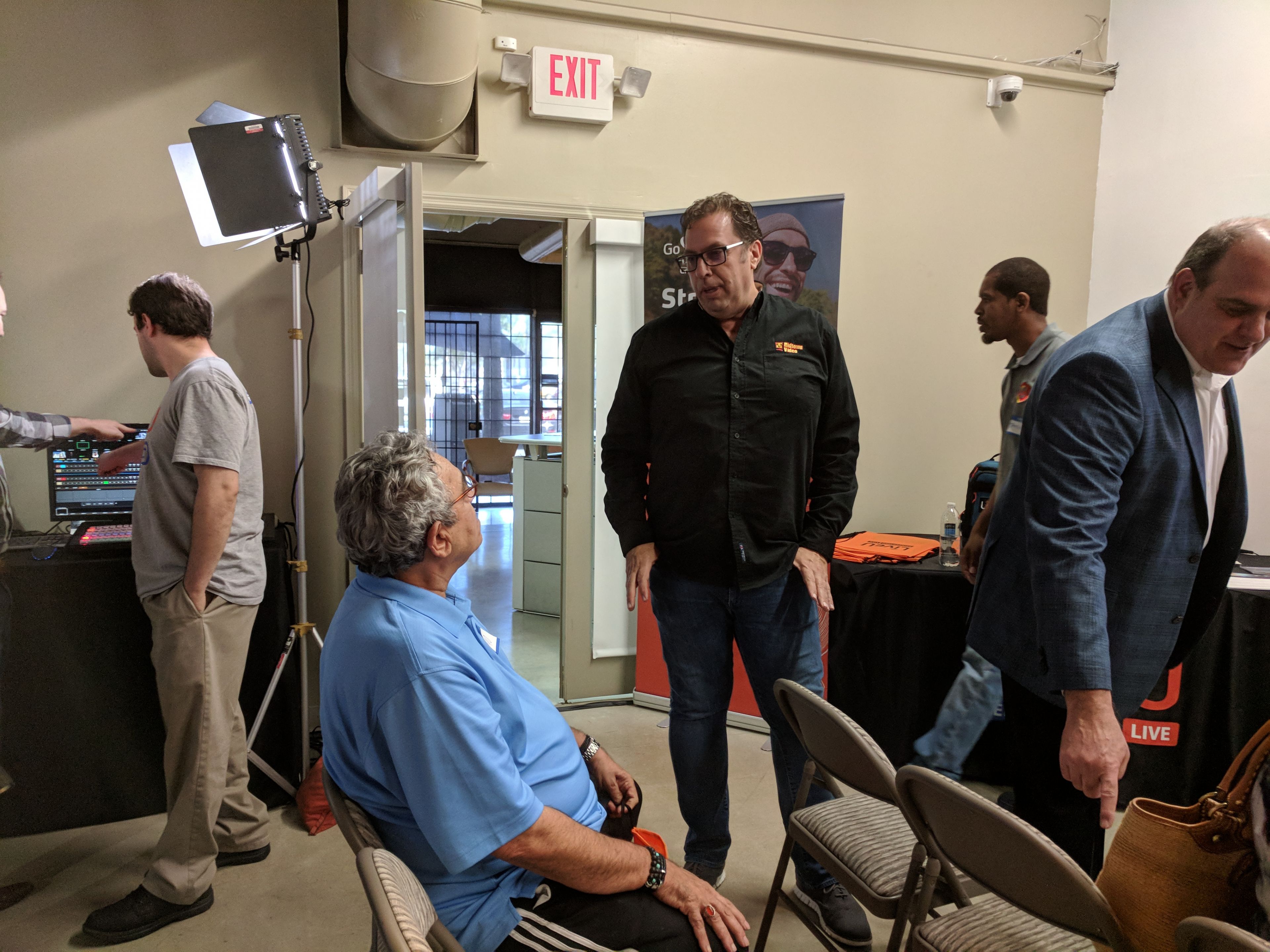
Fernando Iglesias (center, in black) of Midtown Video answers a question of an attendee at the expo. Fernando Iglesias is a native of Argentina and speaks fluent Castilian (the world’s most widely used Spanish language, but not the only one) and English.
AU-EVA1 compact cine camera
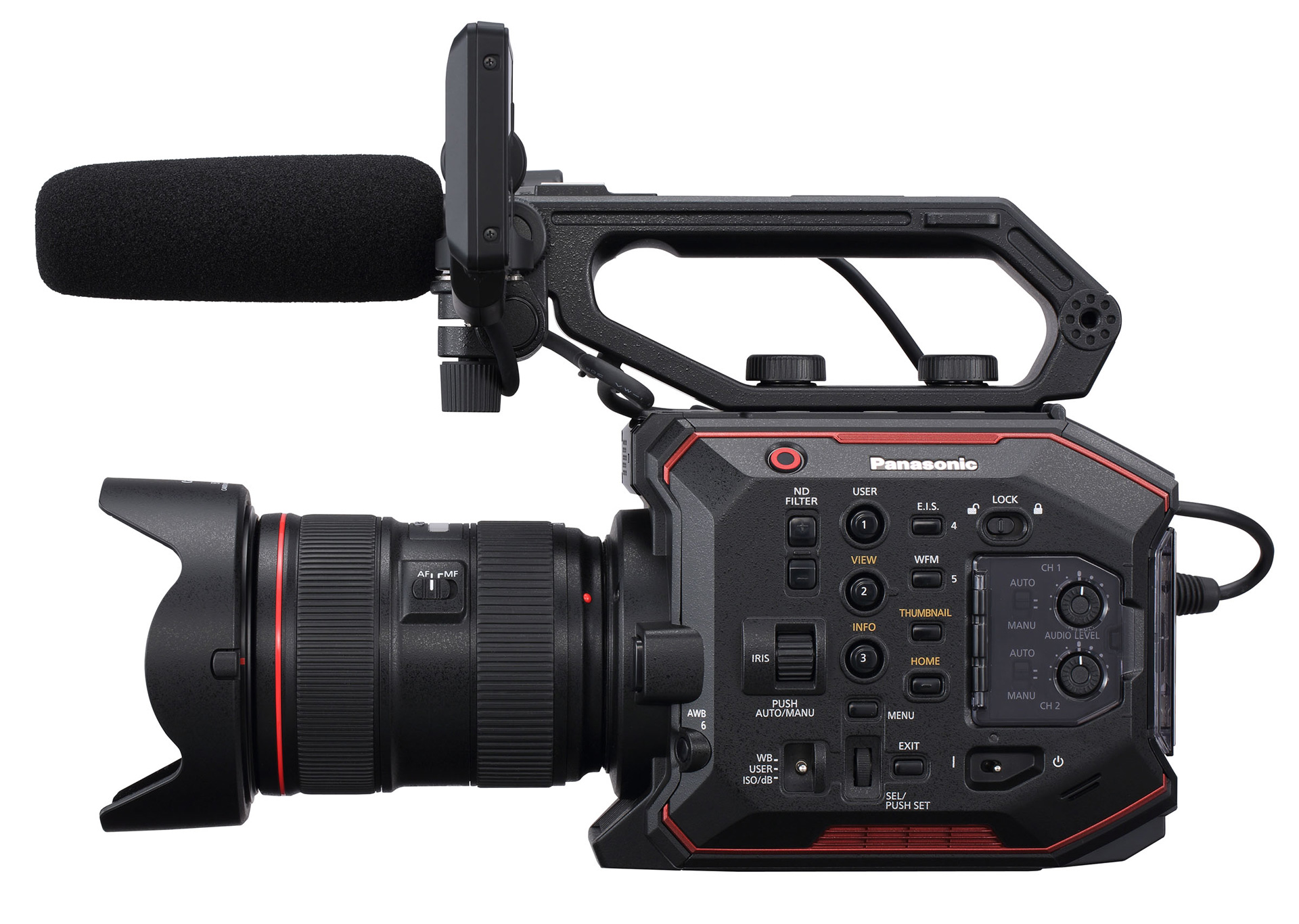
This camera was recently reviewed by Adam Wilt, in three parts. Here are the links to Adam’s review:
Fortunately, Wes Carr of Panasonic was able to answer my only remaining three questions after I had read Adam’s excellent review:
- Question 1: Does the AU-EVA1’s HDMI output include embedded timecode? (I asked the question in order to determine whether it could potentially work with Sound Device’s MixPre-3 audio mixer/recorder, which I reviewed in 2017.)
- Answer 1 (after looking it up): Yes!
- Question 2: In the AU-EVA1, can the waveform monitor be displayed via HDMI?
- Answer 2: No, but it can be moved to different positions in the viewfinder.
- Question 3: In the AU-EVA1, can the exact 24.00 fps can be used with any spatial resolutions (including 4K UHD and 1080p)?
- Answer 3 after verifying in the menu: Yes!
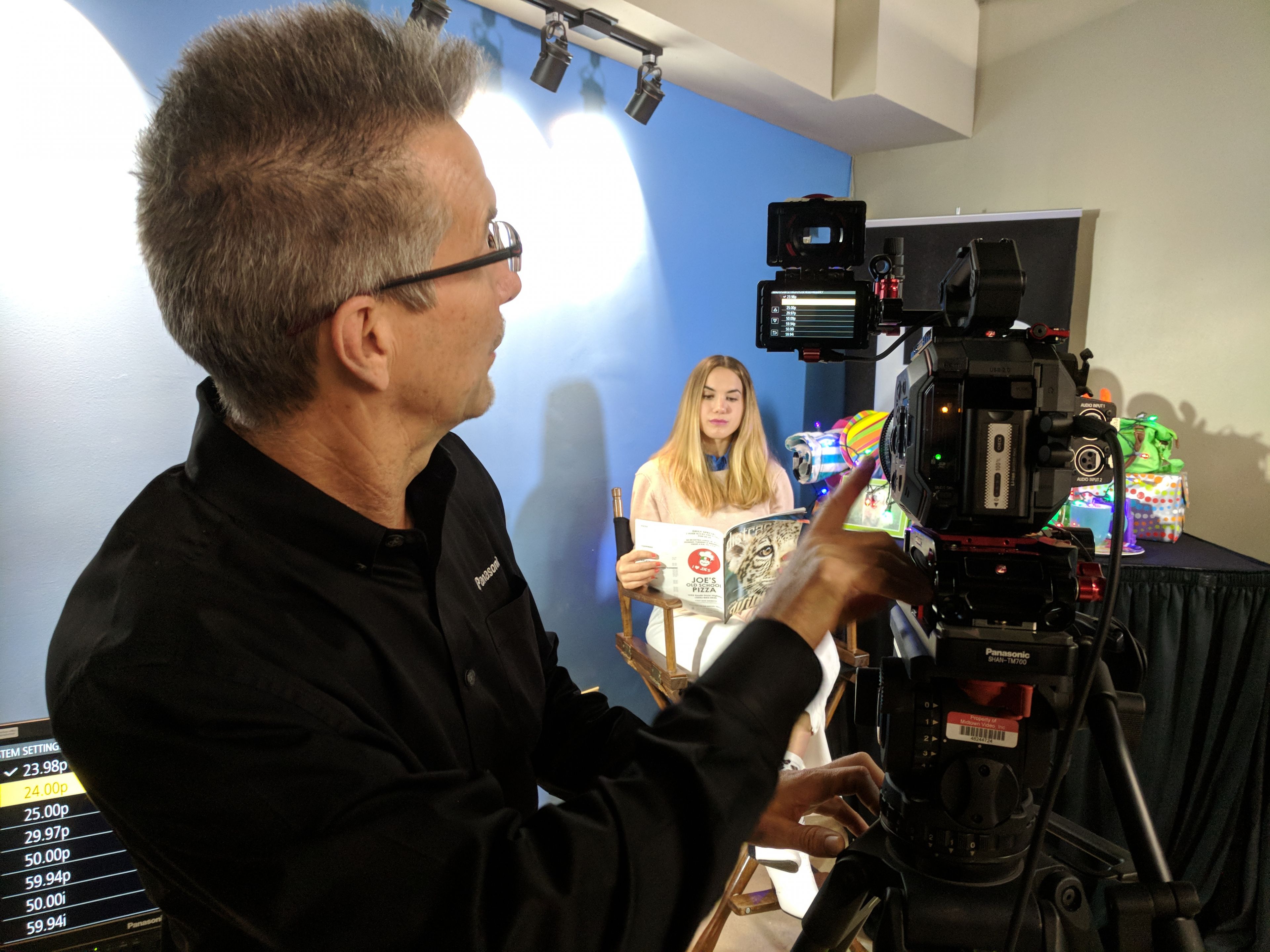
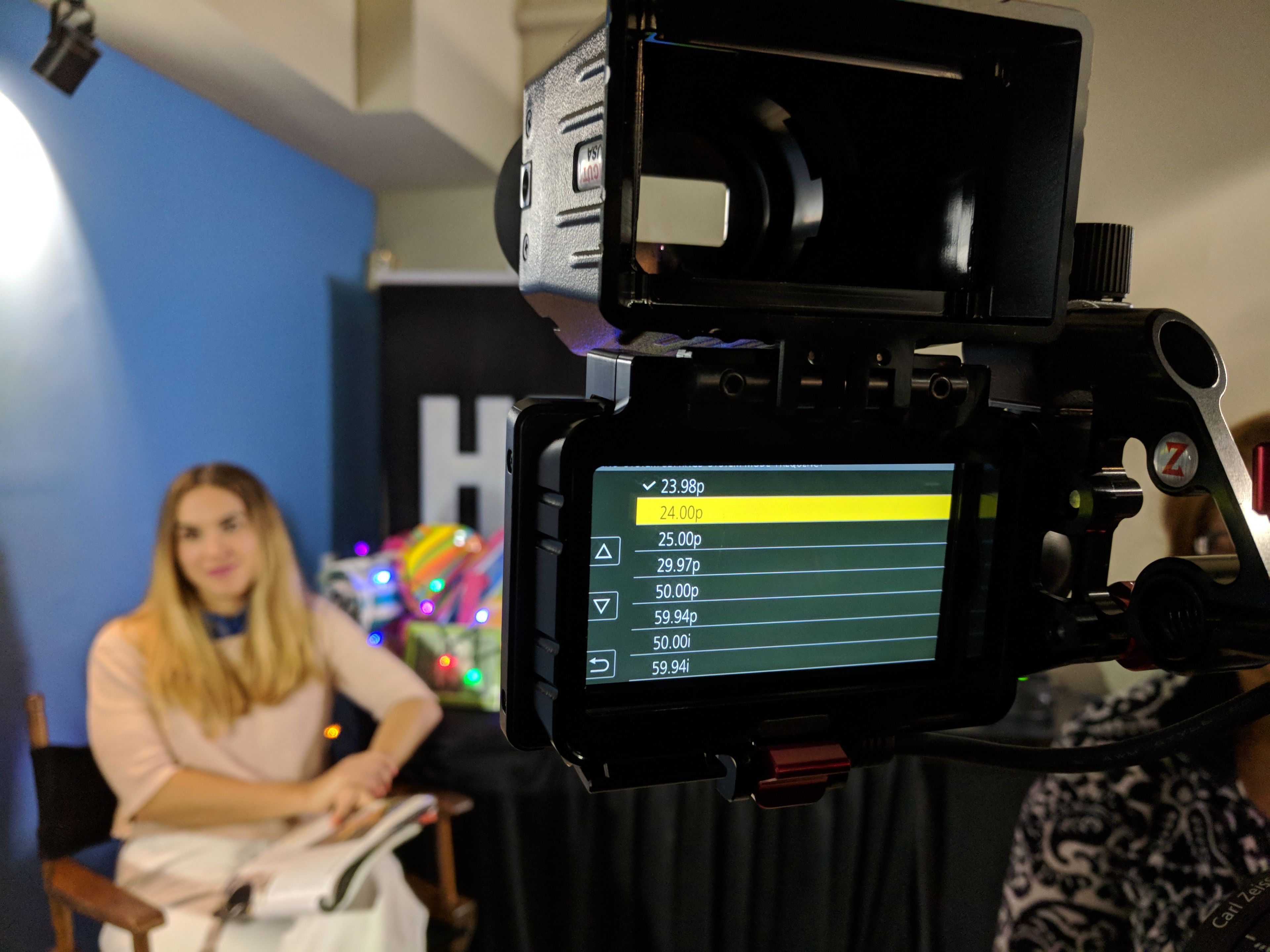
As I indicated in When exact 24 fps beats 23.976… and when it doesn’t, JVC and Sony unfortunately censor exact 24.00 fps in spatial resolutions other than 4K DCI, while all Blackmagic cameras, Canon (in some higher-end models) and Panasonic (in the GH5 and GH5s, and now in the AU-EVA1) do allow that freedom. In that same article, I clarified when it can make sense to use exact 24.00 even for non DCI presentations. I am glad that Panasonic continues to offer that freedom for those producers who need it.
Wes Carr of Panasonic also clarified that —like many other worldcams— a reboot of the AU-EVA1 camera is required when changing the clock between 24 Hz (for 24.00p), 50 Hz (for 25p and 50p) and 59.94 Hz (for 23.976p aka 23.98, 29.97p and 59.94p).
AK-UC3000 4K HDR studio camera
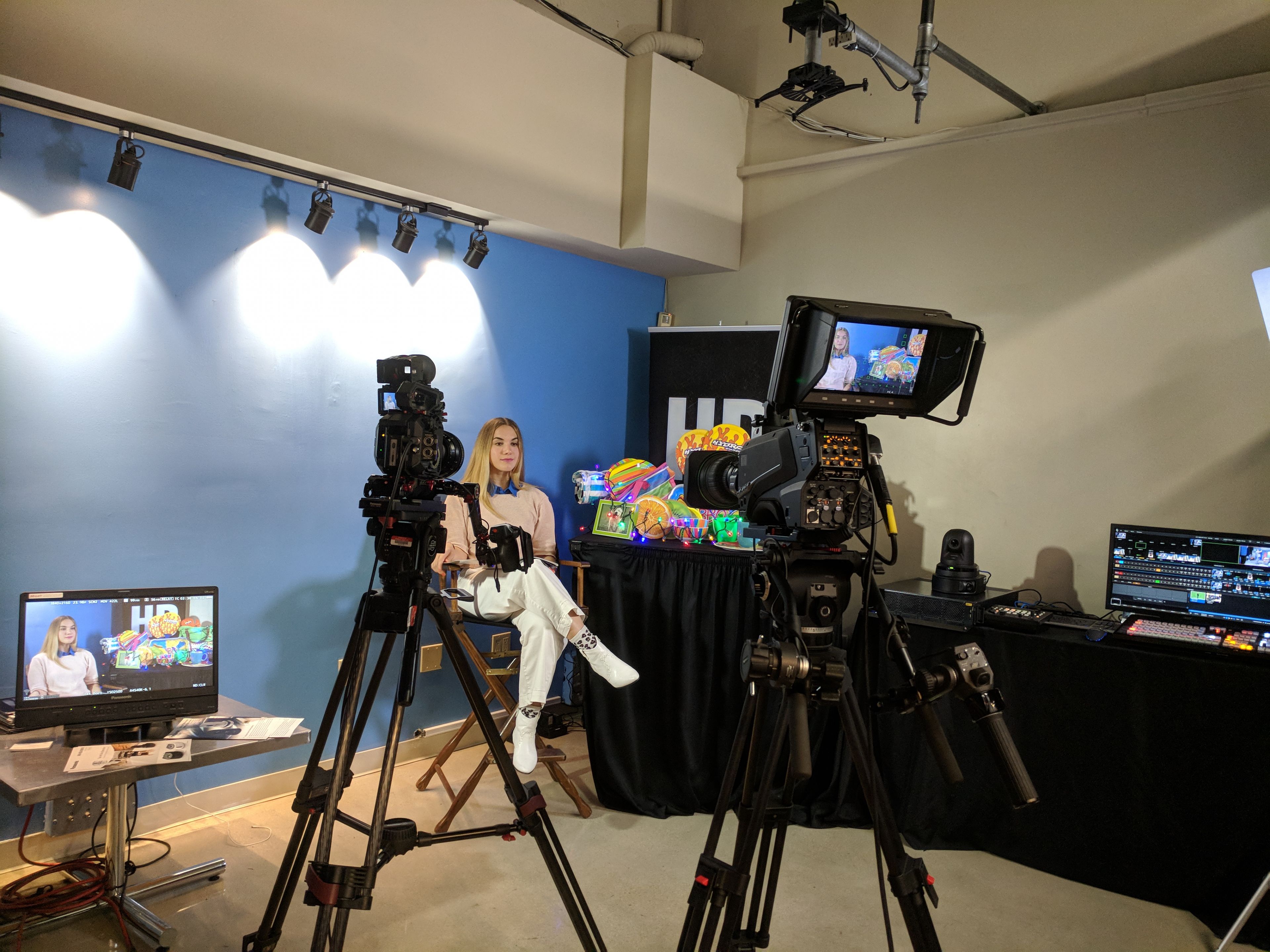
The AK-UC3000 is on the right side of this photo.
The point here is that the AK-UC3000’s CCU (camera control unit) can simultaneously output both SDR (standard dynamic range) and HDR (high dynamic range).
LiveU Solo HDMI and LU600 HEVC
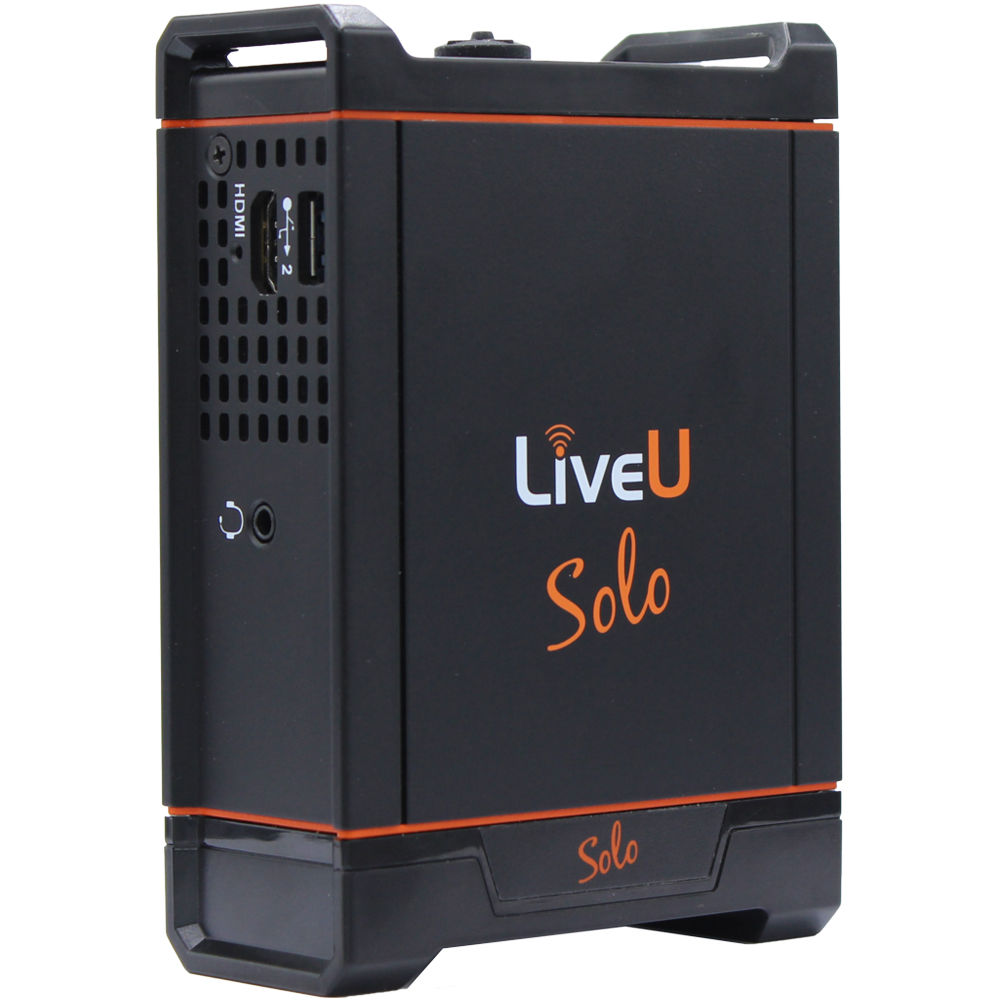
The under US$1000 LiveU Solo HDMI is an audio/video encoder to stream directly to a CDN (content distribution network) like YouTube Live, Facebook Live, Wowza, Ustream and others.
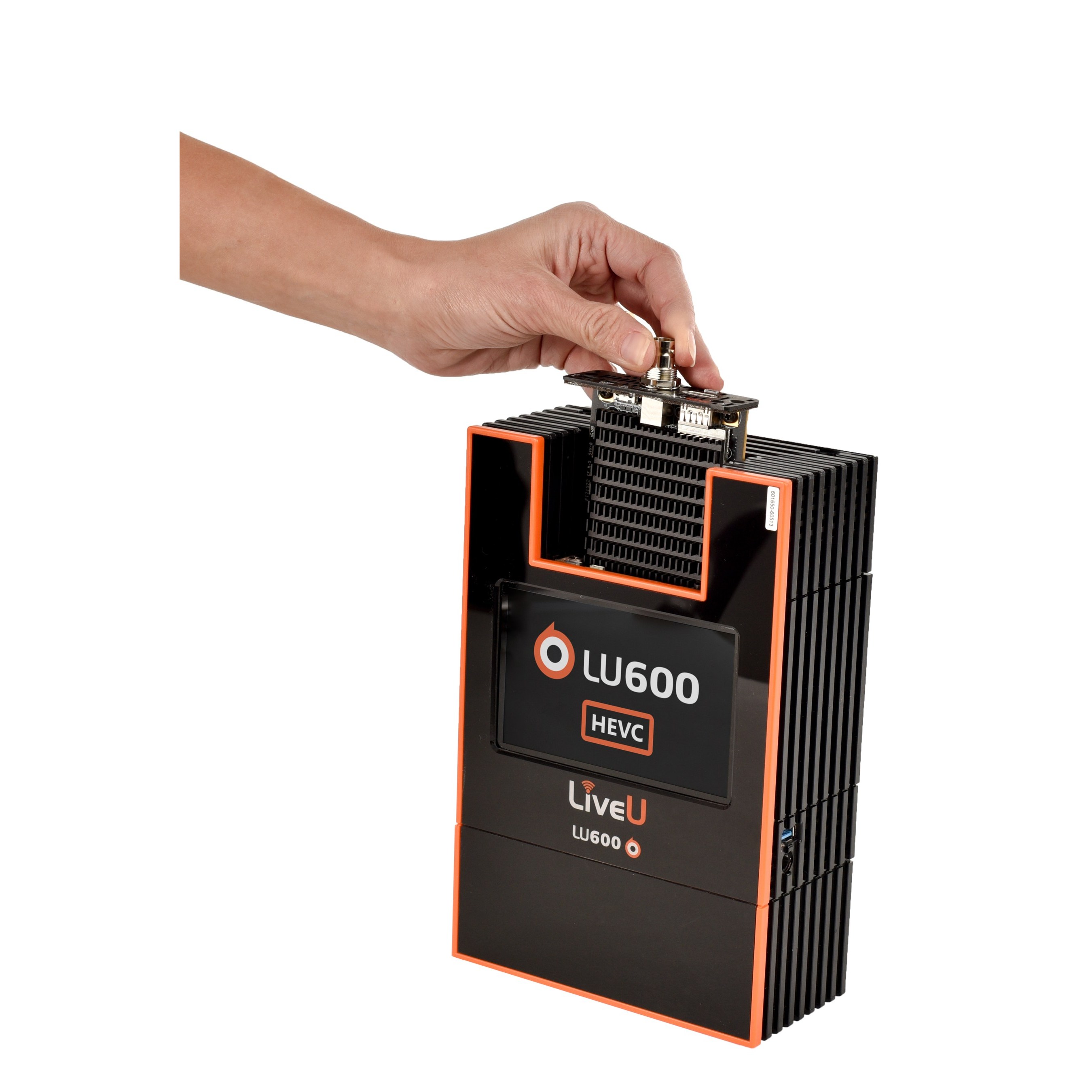
On the other hand, the ±US$20,000 LiveU LU600 HEVC (with H.265 capabilities) is more of an encoder to be used in an end-to-end solution, since it at the other end, it can deliver an SDI output to feed a video mixer (aka “switcher”), or provide an NDI output for those devices which can accept that directly. NDI is an open technology developed by NewTek, which I have covered in several articles. NDI has been adopted by hundreds of manufacturers, including LiveU, Panasonic and Streamstar.
The LiveU Solo HDMI can work perfectly with any camera that outputs 720p natively via its HDMI output, and also with “outgoing” HDMI cameras that output native 1080p via the HDMI output. There is fortunately never any doubt that any 720p signal is progressive, but with 1080 there are many times when it is not so obvious, due to the quite dangerous PsF (progressive segmented frame, which I have covered in many articles) and telecine with pulldown in “shy” 1080p cameras. I was more curious about that and asked Sebastián, the LiveU engineer, about how it behaves with “shy” 1080p cameras, since they output 1080PsF or telecine, rather than native 1080p over HDMI.
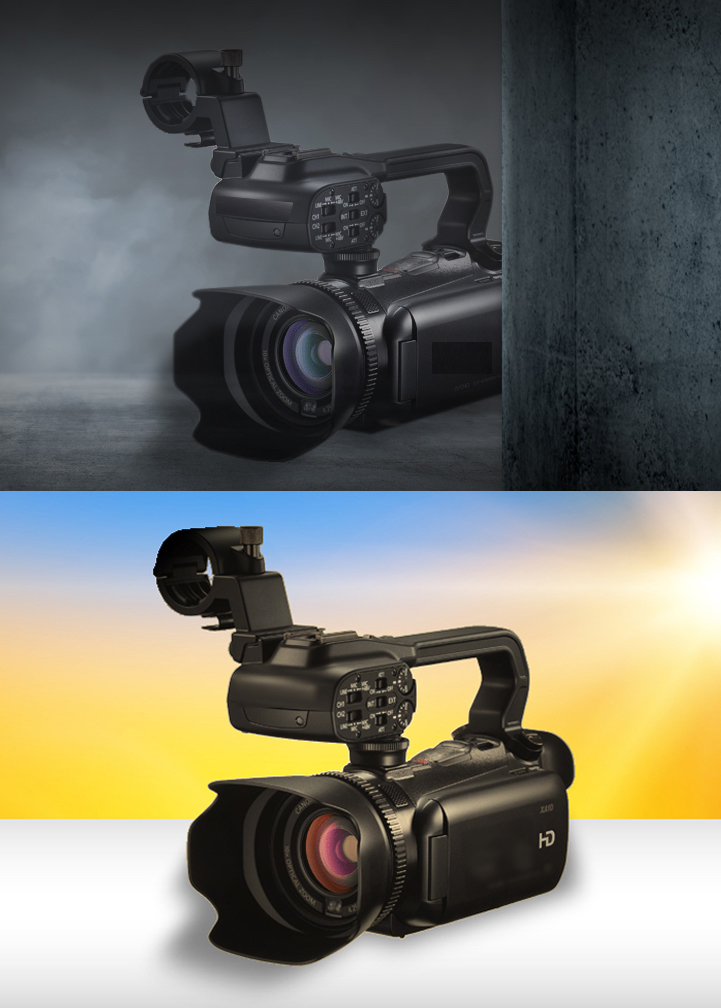
See my 2017 article: Is your HD camera “shy” in 1080p mode? (illustrated above) where I defined in detail the differences between a “shy” and “outgoing” 1080p camera, and how to cure the “shyness” in the former.
Sebastián responded that all LiveU products take and forward the signal as is, without changing it at all. In that sense, LiveU products act the same as the NewTek Connect Spark covered in that article, where they expect any reverse telecine to be handled at the destination device, not internally. This is different from the Átomos Connect, which offers internal reverse telecine, to convert PsF or telecine (both disguised interlaced video) into pure progressive without any degradation, to avoid confusing another device into de-interlacing it unnecessarily. When that happens, it is truly tragic, since it reduces the resolution without justifiable cause. See Is your HD camera “shy” in 1080p mode? for more details.
About Midtown Video in Miami
Since 1984, Midtown Video is a leading Miami rental and sales dealer of profesional video equipment. More info at MidtownVideo.com.
Upcoming articles, reviews, radio shows, books and seminars/webinars
Stand by for upcoming articles, reviews, and books. Sign up to my free mailing list by clicking here. Most of my current books are at books.AllanTepper.com, and my personal website is AllanTepper.com.
Si deseas suscribirte a mi lista en castellano, visita aquí. Si prefieres, puedes suscribirte a ambas listas (castellano e inglés).
Listen to his CapicúaFM show at CapicúaFM.com or subscribe via Apple Podcasts, Radio Public or Stitcher.
Save US$20 on Project Fi, Google’s mobile telephony and data
Click here to save US$20 on Project Fi, Google’s mobile telephone and data service which I have covered in these articles.
FTC disclosure
No manufacturer is specifically paying Allan Tépper or TecnoTur LLC to write this article or the mentioned books. Some of the other manufacturers listed above have contracted Tépper and/or TecnoTur LLC to carry out consulting and/or translations/localizations/transcreations. Many of the manufacturers listed above have sent Allan Tépper review units. So far, none of the manufacturers listed above is/are sponsors of the TecnoTur , BeyondPodcasting or TuNuevaRadioGlobal programs, although they are welcome to do so, and some are, may be (or may have been) sponsors of ProVideo Coalition magazine. Some links to third parties listed in this article and/or on this web page may indirectly benefit TecnoTur LLC via affiliate programs. Allan Tépper’s opinions are his own.
Copyright and use of this article
The articles contained in the TecnoTur channel in ProVideo Coalition magazine are copyright Allan Tépper/TecnoTur LLC, except where otherwise attributed. Unauthorized use is prohibited without prior approval, except for short quotes which link back to this page, which are encouraged!

Filmtools
Filmmakers go-to destination for pre-production, production & post production equipment!
Shop Now